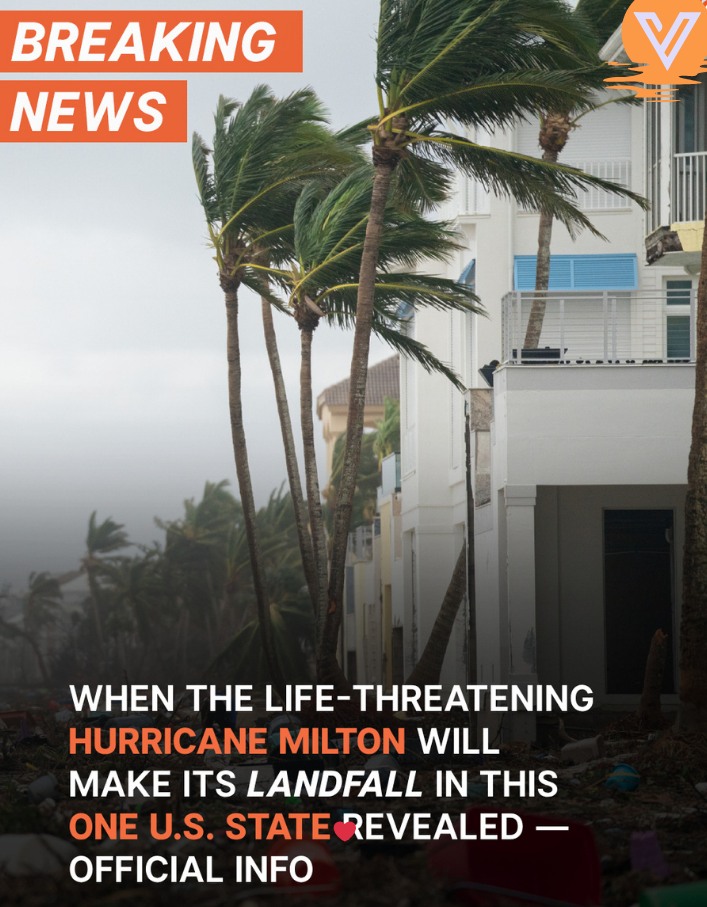
Authorities have begun calling for evacuations as another hurricane approaches Florida. The governor of the state has also declared a state of emergency for multiple counties.
As southeastern states in the U.S. work to recover from the devastating impacts of Hurricane Helene, Florida must prepare for yet another significant tropical storm. According to both the National Hurricane Center and the Central Pacific Hurricane Center, Hurricane Milton is projected to make landfall on the west coast of Florida as early as midweek (the week of October 7).
Hurricane Milton’s risk factor for prompting a life-threatening storm surge and damaging winds continues to increase, and such devastating effects will impact portions of the Florida Peninsula’s west coast. This is expected to begin late October 8 or early October 9.
The National Hurricane Center (NHC) reports that sometime before Hurricane Milton is expected to make landfall, Florida will experience areas of heavy rainfall on Monday (today), later on Tuesday (October 8), and Wednesday evening.
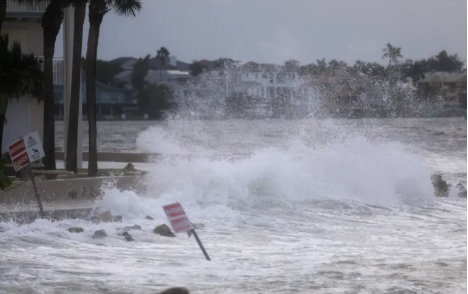
“This rainfall will bring the risk of considerable flash, urban, and areal flooding, along with the potential for moderate to major river flooding,” added the NHC in their hurricane report.
Additionally, regions of northern Mexico’s Yucatan Peninsula are bracing for tropical storm and hurricane conditions, with watches currently in effect.
“Milton is forecasted to bring rainfall totals of 2 to 4 inches across sections of the northern Yucatan Peninsula,” the NHC stated.
In its report regarding Hurricane Milton, the NHC has also urged residents of Florida to follow any directives from local officials and stay informed on the latest storm updates.
Besides outlining the crucial information about Hurricane Milton, the NHC issued a bulletin on their website.
This notice indicated that as Hurricane Milton continues to gain strength over the Southern Gulf of Mexico, storm surge, hurricane, and tropical storm watches have been announced for various parts of Florida.
Areas along Florida’s Gulf Coast under hurricane watch include Tampa Bay, the Dry Tortugas, and regions from Chokoloskee north to the mouth of the Suwannee River.
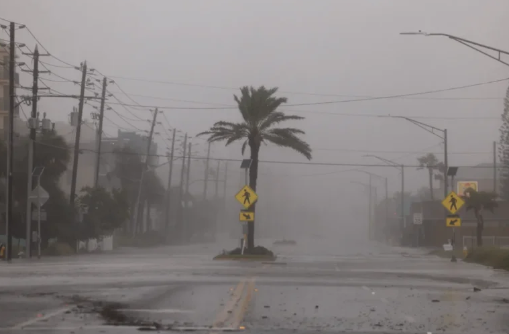
A storm surge watch has also been established from Flamingo north to the Suwannee River, as well as Tampa Bay and Charlotte Harbor.
Additional locations under tropical storm watch encompass areas west of the Suwannee River to Indian Pass, and from south of Chokoloskee to Flamingo. The lower, middle, and upper regions of the Florida Keys, including Florida Bay, are also included in this watch. Such warnings typically indicate that impactful weather is expected within 48 hours.
In its bulletin, the NHC detailed the potential effects associated with Hurricane Milton.
The anticipated storm surge is expected to elevate water levels by 2 to 4 feet above ground along the northern coast of the Yucatan Peninsula. Alongside this surge, dangerous and powerful waves are anticipated.
If the peak surge coincides with high tide, areas that are typically dry could face flooding from rising waters, potentially reaching heights of 12 feet. For instance, Tampa Bay may see surges of 8 to 12 feet, Charlotte Harbor may experience 5 to 10 feet, while the region from Anclote River to Englewood could see similar levels of 8 to 12 feet, and Yankeetown to Anclote River may face 5 to 10 feet of surge.
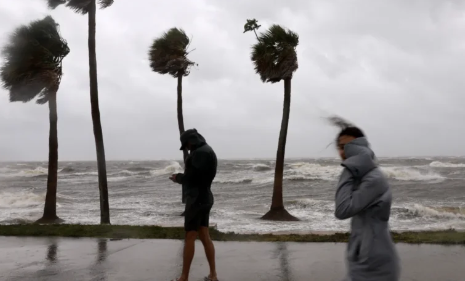
As Hurricane Milton rapidly approaches, Florida Governor Ron DeSantis has declared a state of emergency across 51 counties, an increase from the initial 35 counties due to the escalating threats posed by the tropical storm.
A portion of the Executive Order Memorandum from the governor states, “Whereas, an amendment to Executive Order 24-214 is necessary because recovery efforts and those affected by this disaster require the continued support of the State of Florida.”
“[As] Governor of Florida, I am responsible to meet the dangers presented to the State of Florida and its people by this emergency,” continues the statement.
The following counties are included under DeSantis’ state of emergency declaration: Alachua, Baker, Bradford, Brevard, Broward, Charlotte, Citrus, Clay, Collier, Columbia, DeSoto, Dixie, Duval, Flagler, Gilchrist, Glades, Hamilton, Hardee, Hendry, Hernando, Highlands, and Hillsborough.
Other counties are the Indian River, Lafayette, Lake, Lee, Levy, Madison, Manatee, Marion, Martin, Miami-Dade, Monroe, Nassau, Okeechobee, Orange, Osceola, Palm Beach, Pasco, Pinellas, Polk, Putnam, Sarasota, Seminole, St. Johns, St. Lucie, Sumter, Suwanee, Taylor, Union, and Volusia.
Aside from the governor’s executive order, the director of Florida’s emergency management division, Kevin Guthrie, has also warned civilians to prepare for a widescale evacuation.
Guthrie called it the “largest evacuation that we have seen most likely since 2017 Hurricane Irma.” During a recent press conference, he reiterated, “I highly encourage you to evacuate.”
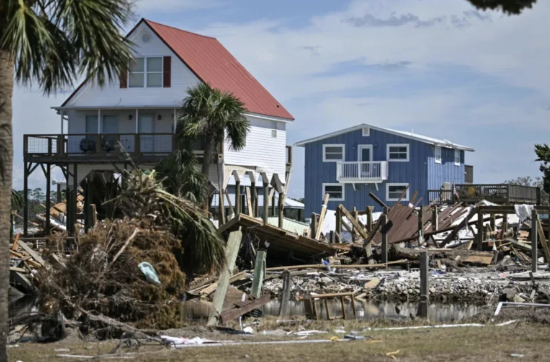
One county that has already started with its evacuation plans is Pinellas County. According to Cathie Perkins, director of the county’s emergency management, Pinellas has already called for the evacuation of 6,600 patients from 6 hospitals, 44 assisted living facilities, and 25 nursing homes.
News outlet Reuters states that school has also been canceled from today (Monday) to Wednesday (October 9).
Speaking about both Hurricane Milton and Hurricane Helene, St. Petersburg Mayor Ken Welch said, “We already will be rebuilding for years because of Hurricane Helene, and that will be exacerbated by the impacts of this storm.”
He further expressed, “Remember, Hurricane Helene was 100 miles (160 km) away from us, moving in a different direction. This is a powerful Cat 2 or Cat 3 hurricane headed directly for us.”
FEMA Administrator Deanne Criswell recently sat down for an interview with ABC News to discuss the latest updates concerning recovery efforts after Hurricane Helene.
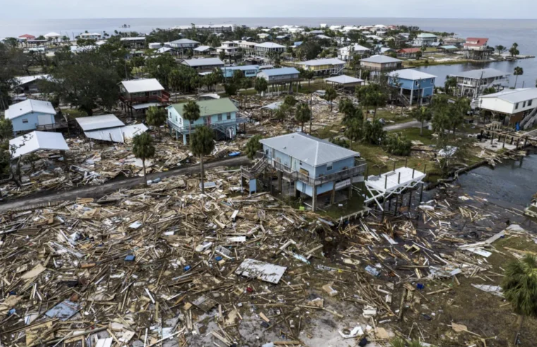
During the conversation, the topic of Hurricane Milton came up, and Criswell was asked if the emergency management organization was ready and if she had any advice for residents.
“We are absolutely ready. We had started planning for this days ago, even before it formed. We know that it’s headed straight towards Florida. I reached out to Governor DeSantis this morning, and I believe I am having a call with him shortly after this interview. We will move more resources in there to support their needs,” disclosed Criswell.
She also mentioned how they already have people in Florida who have been helping with the response and recovery efforts for the devastating impacts caused by Hurricane Helene and past storms.
“So we’re working with the State EOC to understand what their requirements are going to be, so we can have those in place before it makes landfall,” concluded Criswell.

















